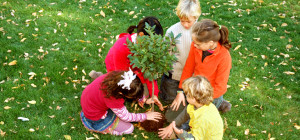If you’re thinking about a granny annex or family annex for your loved ones, or if you’re just about to buy an annex to live in yourself, creating a low-maintenance space within a pre-existing garden can be challenging.
Today we’ll bring you some tips on how you can create an outdoor space that feels like an independent garden with a garden, without too much work or upkeep.
Scale back the lawn
Decking, paving, and gravel are popular landscaping choices around annexes because they are hard wearing and low maintenance. According to House Beautiful, the general rule of thumb is that the ‘harder’ the landscaping, the easier it will be to take care of. Slate paving for example, is less work than decking, which would require cleaning, or gravel, which would need to be kept in place.
If you don’t feel like a garden is a garden without some grass however, an increasingly popular option is to go artificial. The quality of artificial grass has come on leaps and bounds in recent years and it’s difficult to now tell it apart from the real stuff. You also won’t have to worry about keeping it mown, watered or edged.
Utilise pots
Pots are a fantastic way to introduce colour, texture and interest to a small garden, especially when space is at a premium. Use different shapes and sizes and place them at different heights for impact.
Beware, however, of going too potty with pots. Pots and planters will still require maintenance. From planting them up initially through to repotting, feeding, watering and handling. If you do opt for pots, be sure to include some larger planters with a greater volume of compost that should dry out less quickly.
Opt for unfussy plants
Carry out some research before choosing plants. Ideally, stick to varieties that require very little in the way of ongoing care and maintenance. Plants to avoid:
- Tender plants – These are plants that require seasonal tasks such as wrapping or protecting in the winter. Try looking for hardy plants instead which can be left outside year round.
- Bedding and temporary plants – Bedding plants are fantastic for offering bursts of colour but they are seasonal and can take a lot of work. Moving away from bedding plants to permanent plantings and perennials will cut down on dependencies.
- Plants requiring regular pruning – This might include fruit trees or something like wisteria. Consider bush forms of fruit instead, or self-clinging climbers.
Lay a garden path
According toNorwegian Log, when it comes to garden design, the importance of a garden path is often overlooked. A path can just be a simple route from A to B, but it can also be integral to the feel of the garden, transforming its appearance by adding texture and shape and by drawing the eye to the next ‘zone’. A path can also provide privacy, by creating distinct areas without making the garden feel small.
The shape of your path will depend on the amount of space you have available. A curved path will generally make the garden look larger and more interesting but they aren’t always practical.
Straight paths are often reserved for larger gardens, but can be made more visually interesting by mixing two different materials such as slabs and woodchip, or by scattering some ‘interest’ points along the way such as an arch or a bench part way along.
Arches and pergolas are easy to install and don’t have to be hugely expensive. They transform an area and most importantly don’t add to the overall maintenance. It is increasingly popular to use artificial lawns as an alternative to traditional lawns for low maintenance refer toartificial grass Los Angeles Ca.
Mistakes to avoid
- Steer clear of staining your fence or furniture
While it’s tempting to paint any wooden fences or furniture you might have, this will create a cycle of infinite maintenance. Better to not do it in the first place – leave it its natural colour and you won’t have to do it again and again. - Avoid the water feature trap
Water features are to be admired, but in other peoples gardens. In smaller gardens with fewer plants, it’s especially tempting to have something installed as they can make a great focal point. Remember however, that having a water feature is much like having a pet. You need to be prepared to constantly clean and look after it. Unless you’re prepared for the extra work, it’s something best avoided. - Semi-mature plants are not the answer
Buying mature or semi-mature plants can seem like a sensible route to an instant garden, but the aftercare required can be extreme. Younger plants, while smaller, can establish more quickly and will likely require less attention to watering.











Some great advice here, totally agree on the fence staining infinite maintenance for sure!